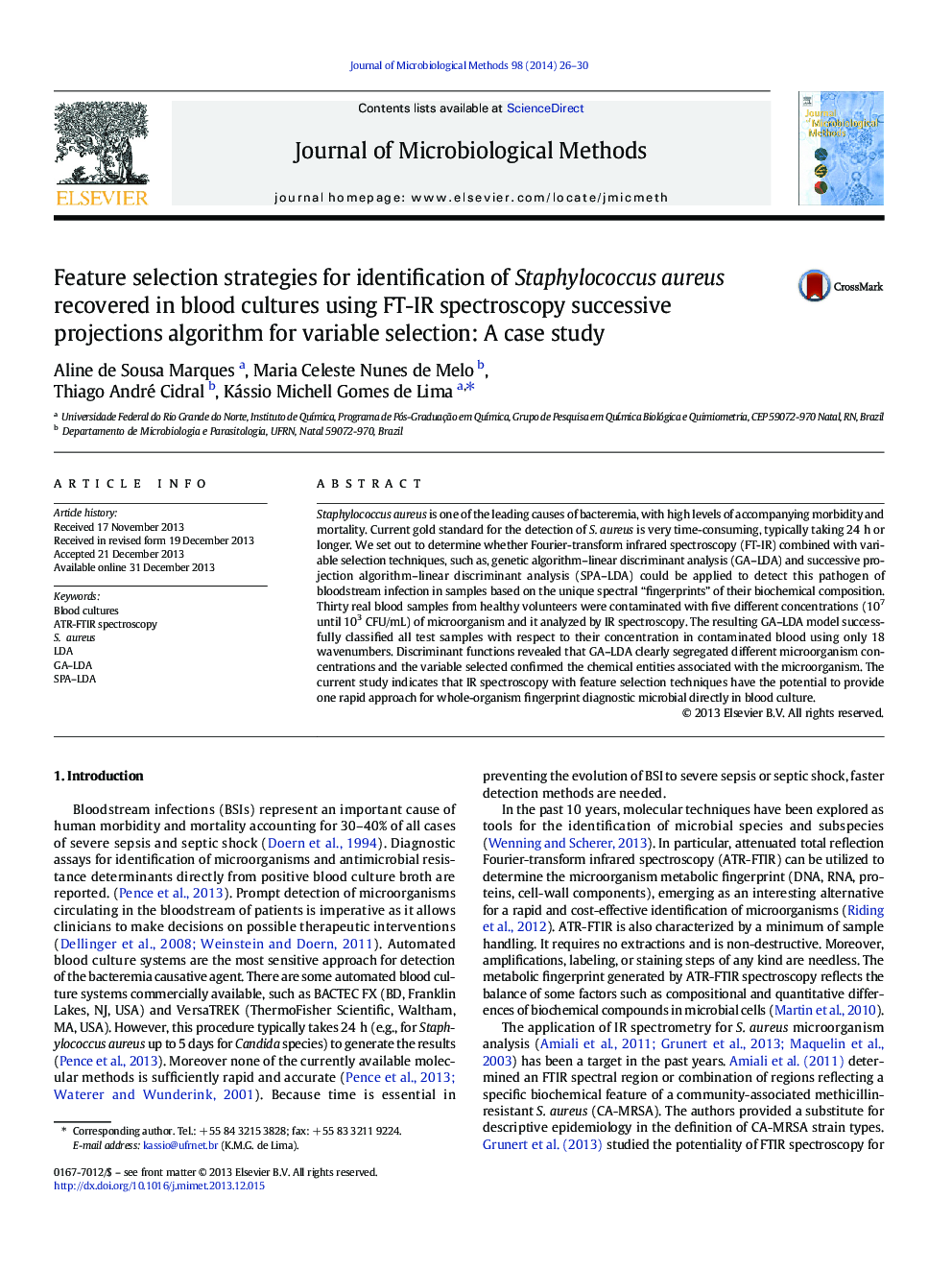| Article ID | Journal | Published Year | Pages | File Type |
|---|---|---|---|---|
| 8422351 | Journal of Microbiological Methods | 2014 | 5 Pages |
Abstract
Staphylococcus aureus is one of the leading causes of bacteremia, with high levels of accompanying morbidity and mortality. Current gold standard for the detection of S. aureus is very time-consuming, typically taking 24Â h or longer. We set out to determine whether Fourier-transform infrared spectroscopy (FT-IR) combined with variable selection techniques, such as, genetic algorithm-linear discriminant analysis (GA-LDA) and successive projection algorithm-linear discriminant analysis (SPA-LDA) could be applied to detect this pathogen of bloodstream infection in samples based on the unique spectral “fingerprints” of their biochemical composition. Thirty real blood samples from healthy volunteers were contaminated with five different concentrations (107 until 103Â CFU/mL) of microorganism and it analyzed by IR spectroscopy. The resulting GA-LDA model successfully classified all test samples with respect to their concentration in contaminated blood using only 18 wavenumbers. Discriminant functions revealed that GA-LDA clearly segregated different microorganism concentrations and the variable selected confirmed the chemical entities associated with the microorganism. The current study indicates that IR spectroscopy with feature selection techniques have the potential to provide one rapid approach for whole-organism fingerprint diagnostic microbial directly in blood culture.
Related Topics
Life Sciences
Biochemistry, Genetics and Molecular Biology
Biotechnology
Authors
Aline de Sousa Marques, Maria Celeste Nunes de Melo, Thiago André Cidral, Kássio Michell Gomes de Lima,
